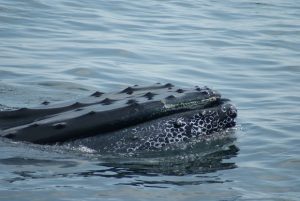 From July until October each year, humpback whales migrate to the warmer waters of the Seychelles archipelago from the Antarctic in order to mate and breed. However this year around Aldabra there was a decline in their sightings, with only nine whales being recorded and much later into the season than usual. Although the number of sightings of these whales can fluctuate between 20 to 60 sightings per season, only nine is a notable decrease. There is a possibility the decline could be due to the recent 2015-16 El Niño weather because with higher than average ocean temperatures, the krill that the whales feed on may not have been as freely available as usual, forcing the whales to either make shorter migration or even forgo the migration altogether. Whale researchers in Australia have also noted a sharp decline in sightings of both humpbacks and southern right whales off the south-western coastline and it seems this change in feeding and breeding patterns is not isolated to the Southern hemisphere, either. Sub-Arctic whales from Alaska that usually go all the way south to Hawaii have decided not to make the journey, with whale researchers concerned about the non-appearance of the humpbacks to the Pacific islands. Given the difficulties involved in tracking whales, researchers believe it could be possible that the whales, usually seen around Aldabra in the Outer Islands of the Seychelles chose to migrate instead to a different area of the western Indian Ocean this year.
From July until October each year, humpback whales migrate to the warmer waters of the Seychelles archipelago from the Antarctic in order to mate and breed. However this year around Aldabra there was a decline in their sightings, with only nine whales being recorded and much later into the season than usual. Although the number of sightings of these whales can fluctuate between 20 to 60 sightings per season, only nine is a notable decrease. There is a possibility the decline could be due to the recent 2015-16 El Niño weather because with higher than average ocean temperatures, the krill that the whales feed on may not have been as freely available as usual, forcing the whales to either make shorter migration or even forgo the migration altogether. Whale researchers in Australia have also noted a sharp decline in sightings of both humpbacks and southern right whales off the south-western coastline and it seems this change in feeding and breeding patterns is not isolated to the Southern hemisphere, either. Sub-Arctic whales from Alaska that usually go all the way south to Hawaii have decided not to make the journey, with whale researchers concerned about the non-appearance of the humpbacks to the Pacific islands. Given the difficulties involved in tracking whales, researchers believe it could be possible that the whales, usually seen around Aldabra in the Outer Islands of the Seychelles chose to migrate instead to a different area of the western Indian Ocean this year.
Photo Credit: Andy King



